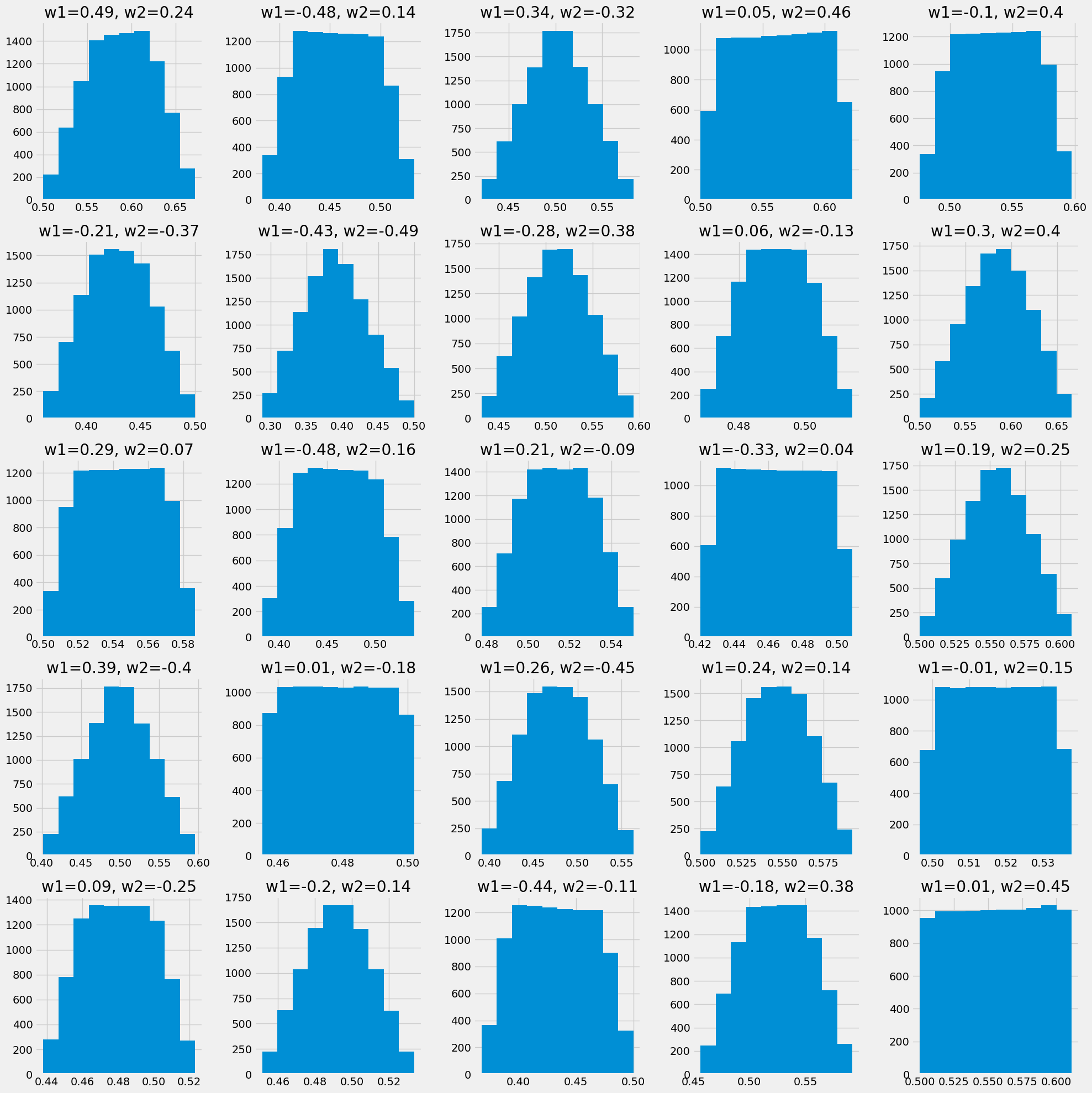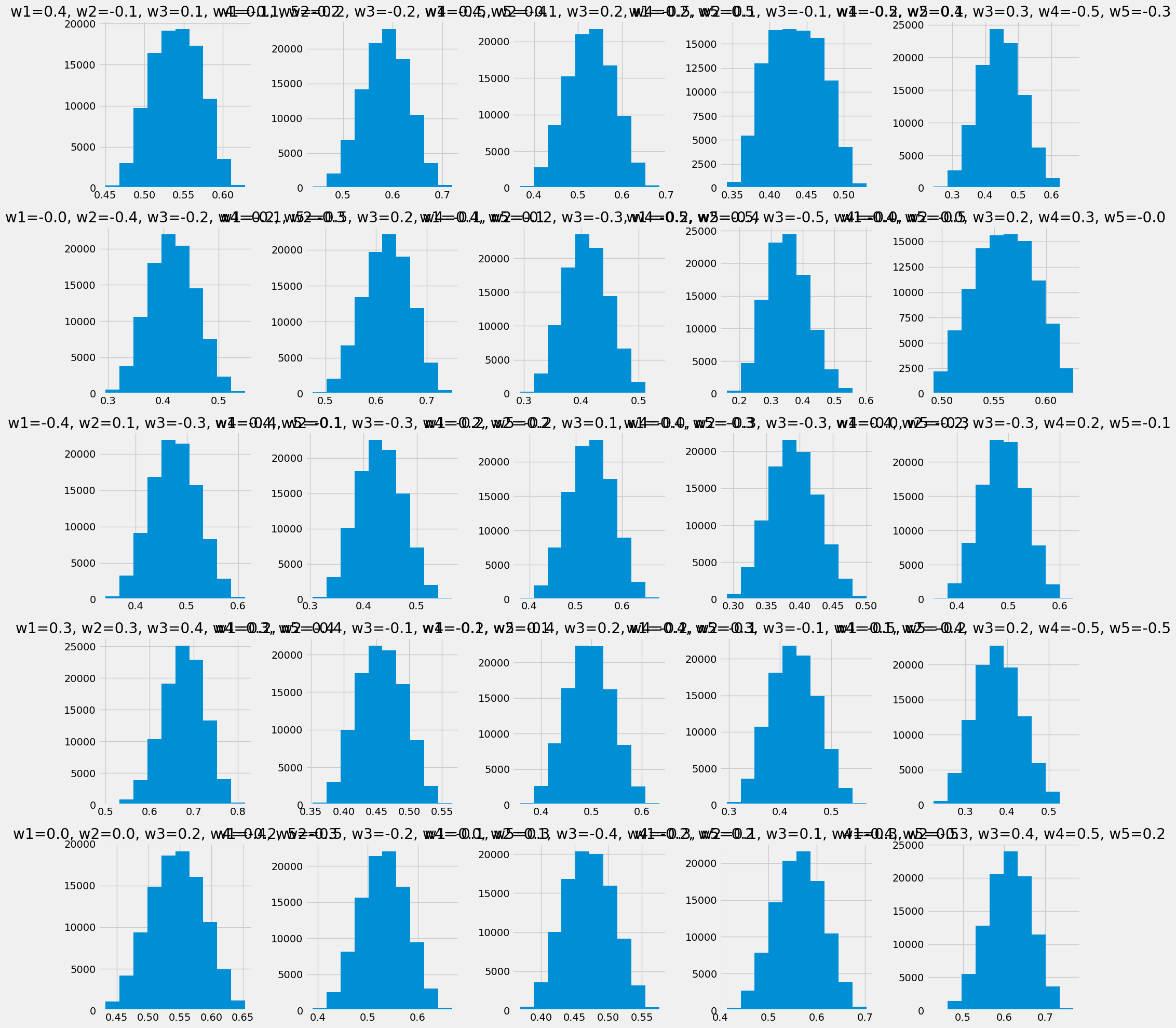So lets say for a simple network, y_prob = sigmoid(x1*w1 + x2*w2) where x1 and x2 are also outputs of sigmoids, in (0, 1) , what are possible values for y_prob ?
import numpy as np
from itertools import product
import pylab
import matplotlib.pyplot as plt
from utils import utc_now, utc_ts
import plot
side = 5
vec = []
for i in range(side*side):
w1, w2 = -0.5 + np.random.random((2, ))
vec.append(
[
[
n.logit_to_prob(x1*w1 + x2*w2)
for x1, x2 in product(np.arange(0, 1, .01), np.arange(0, 1, .01))
],
f"w1={round(w1, 2)}, w2={round(w2, 2)}"
])
out_loc = plot.plot_grid(vec, side=5, title="y_prob-outputs")
# saving to 2022-10-13T185339-y_prob-outputs.png

ok so yea we have a pretty tight range just from this. Hmm let me see what happens if I were to add a bunch of extra nodes.
side = 5
vec = []
for i in range(side*side):
w1, w2, w3, w4, w5 = -0.5 + np.random.random((5, ))
vec.append(
[
[
n.logit_to_prob(x1*w1 + x2*w2 + x3*w3 + x4*w4 + x5*w5)
for x1, x2, x3, x4, x5 in product(
np.arange(0, 1, .1),
np.arange(0, 1, .1),
np.arange(0, 1, .1),
np.arange(0, 1, .1),
np.arange(0, 1, .1)
)
],
f"w1={round(w1, 1)}, w2={round(w2, 1)}, w3={round(w3, 1)}, w4={round(w4, 1)}, w5={round(w5, 1)}"
])
out_loc = plot.plot_grid(vec, side=5, title="y_prob-outputs")
# saving to 2022-10-13T200559-y_prob-outputs.png


